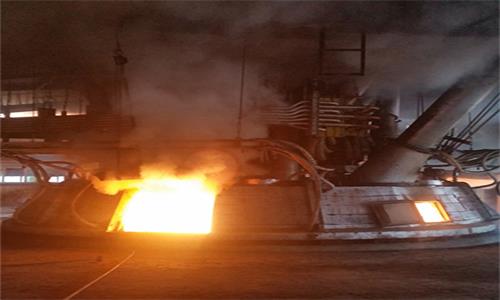The iron alloy ferroally kiln refractory lining needs to withstand the strong high temperature in the smelting process also bears the physical and chemical erosion and mechanical blasting action of the charge, the high temperature furnace gas, the molten iron water and the slag.
Refractory ferroalloy furnace lining in the smelting process, ferroalloy furnace refractory is necessary to withstand strong high temperature. In order to ensure that ferroalloy smelting can be carried out effectively at high temperatures, special refractory materials must be used to build electric furnace lining.
Refractory Materials for Ferroalloy Furnaces
1
.Fire Clay Brick
The main raw refractory material for making clay fire bricks is refractory clay with good plasticity and bonding force, so clay refractory bricks are widely used in metallurgy.
The main performance characteristics of refractory clay bricks , have strong resistance to acid slag, good thermal shock resistance, good thermal insulation capacity and certain insulation properties.
The clay brick is mainly used for laying the furnace wall lining of the exposed part of the ore furnace, the furnace wall and the outer layer of the furnace bottom for heat preservation and heat insulation, or for lining the ladle of the ladle
2.
Carbon Refractory Brick
The main raw refractory material for making carbon bricks is crushed coke and anthracite. The binder is coal tar or asphalt.
Compared with other common refractory materials, carbon bricks not only have high compressive strength, but also have a small coefficient of linear expansion. Carbon refractory brick have good wear resistance and high refractoriness and load softening temperature, good thermal shock resistance, and excellent slag resistance.
In the production of ferroalloys furnace refractory material, carbon bricks can be used as lining refractory materials for all kinds of ferroalloys that are not afraid of carburizing.
Carbon bricks are easily oxidized under high temperature conditions. Carbon bricks are mainly used for laying furnaces and tapping chutes that are not exposed to the air part of the furnace wall, the bottom of the furnace and the lower part of the high-temperature furnace.
Due to the high conductivity of the carbon refractory brick, the use of the carbon brick lining electrode is easy to lift, and the height of the carbon brick of the furnace wall and the thickness of the carbon brick at the bottom of the furnace can be appropriately reduced.
3.
High Alumina Brick
The main raw refractory material for the manufacture of high alumina bricks is high alumina bauxite and the binder is refractory clay.
The biggest advantage is high refractoriness, high load-softening temperature, good thermal shock resistance, good slag resistance, high mechanical strength, and these properties increase rapidly with increasing content.
In the production of refractory ferroalloys furnace, high alumina bricks can be used for laying iron ore lining bricks for blast furnaces, blast furnace shafts, hearths, and for laying iron ladle linings.
4.
Magnesia Refractory Brick
The main performance characteristics of magnesia bricks during use are high refractoriness and excellent resistance to alkaline slag.
In the production process of ferroalloys furnace, magnesia bricks are mainly used for laying iron linings for electric arc furnace walls, furnace bottoms and medium and low carbon ferromanganese.
Replace the magnesia brick masonry roof with magnesia alumina brick and magnesia chrome brick


